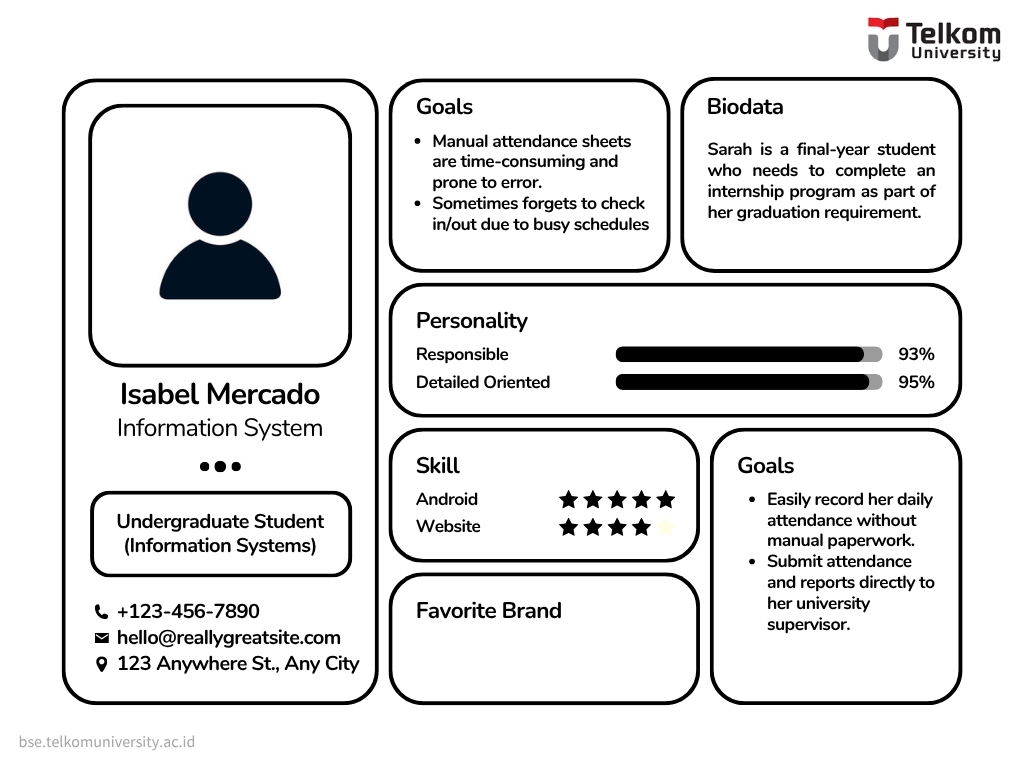
User Persona: A Complete Guide to Deeply Understanding Users
A user persona is a fictional model that reflects the behavior, needs, and motivations of real users based on in-depth research data.
In the world of User Experience (UX) design and digital marketing, understanding the audience is the main foundation. User personas help design, product, and marketing teams clearly imagine “Who” their users are. Personas are semi-fictional representations compiled from real research (created based on collections of actual user data), helping to guide product strategies and foster empathy within the team (UX Design Institute, 2022; Amplitude, 2023).
What Is a User Persona?
A user persona is a fictional character that represents a real user segment based on research data such as interviews, surveys, and behavioral analysis (Amplitude, 2023).
According to the Interaction Design Foundation (2025), personas unify user goals, behaviors, and patterns into one profile so that teams can design more targeted solutions. Nielsen Norman Group (2015) adds that personas make “users more memorable” in team discussions, rather than being just numbers or abstract data.
Structure and Components of a User Persona
A persona generally includes the following elements (CareerFoundry, 2023; Nielsen Norman Group, 2015):
- A fictional name & representative photo to provide identity.
- Demographic data such as age, occupation, and location.
- Goals & needs that users want to achieve.
- Challenges & frustrations (pain points) experienced by users.
- Behaviors & habits related to the product or service.
- A short quote that describes the persona’s perspective.
This structure helps teams stay focused on the needs of the ideal user during the design process.
Why Are Personas Important in UX and Business?
Personas are beneficial not only for UX teams but also for the entire organization:
- Unifying the team’s understanding of the ideal user (Nielsen Norman Group, 2015).
- Reducing assumptions and strengthening data-driven decisions (Amplitude, 2023).
- Guiding design priorities and features to align with user needs (Interaction Design Foundation, 2025).
- Facilitating communication with stakeholders, as personas are a visual way to show who the target users are (CareerFoundry, 2023).
In other words, personas are a bridge between complex research data and empathetic, user-centered design practices.
How to Create a User Persona
According to CareerFoundry (2023) and Interaction Design Foundation (2025), here are the steps to create an effective persona:
Collect Research Data
Use interviews, surveys, observations, and analytics.
Group Findings
Identify behavioral patterns, motivations, and needs.
Create Persona Draft
Include demographics, goals, pain points, and quotes.
Use a Visual Template
To make it easier for the team to understand.
Validate & Iterate
Review with stakeholders and update personas regularly.
User Persona Template
Several platforms provide ready-to-use persona template, for example:
These templates help teams quickly create personas, present information in a visual format that is easy to remember, and support cross-division collaboration (Xtensio, 2025; Venngage, 2025).
Example of a User Persona
For example, for an e-learning application:
- Name: Rina
- Demographics: 20-year-old student, graphic design major
- Goal: Learn quickly with interactive material
- Frustration: Materials are too long and difficult to understand
- Habit: Learning through a smartphone at night
- Persona Quote: “I need concise material in visual form.”
This simple example shows how personas can help teams identify the specific needs of users (Venngage, 2025).
Practical Tips for Using Personas
- “Do not create too many personas”: just 3–5 that are most representative (Nielsen Norman Group, 2015).
- “Use attractive visuals” so personas are easy for the team to remember (Xtensio, 2025).
- “Link personas with journey maps” to understand the user experience as a whole (UserInterviews, 2025).
- “Update personas regularly” as user needs may change over time (CareerFoundry, 2023).
Conclusion
A user persona is a strategic tool to understand users empathetically and make data-driven design decisions. By creating representative personas, teams can unify focus, reduce assumptions, and design solutions that truly meet user needs (Interaction Design Foundation, 2025; Nielsen Norman Group, 2015).
In addition, visual templates from Xtensio, Venngage, or UserInterviews make persona presentations easier, providing insights that are more easily understood across divisions. Personas are not only a UX tool but also an organizational communication strategy.
Want to gain deeper understanding about user experience and data-driven strategies? Discover insights and exclusive learning programs at Telkom University.
References
Amplitude. (2023). What is a user persona? Definition + how to create personas. Retrieved September 2, 2025, from https://amplitude.com/glossary/terms/user-persona
CareerFoundry. (2023). How to define a user persona [2025 complete guide]. Retrieved September 2, 2025, from https://careerfoundry.com/en/blog/ux-design/how-to-define-a-user-persona/
Interaction Design Foundation. (2025). Personas – Why and how you should use them. Retrieved September 2, 2025, from https://www.interaction-design.org/literature/article/personas-why-and-how-you-should-use-them
Nielsen Norman Group. (2015). Personas make users memorable for product teams. Retrieved September 2, 2025, from https://www.nngroup.com/articles/persona/
UX Design Institute. (2022). What are UX personas and what are they used for? Retrieved September 2, 2025, from https://www.uxdesigninstitute.com/blog/what-are-ux-personas/
Xtensio. (2025). User persona template – Create customer personas easily. Retrieved September 2, 2025, from https://xtensio.com/user-persona-template/
Venngage. (2025). 23 user persona examples, templates & tips (2025). Retrieved September 2, 2025, from https://venngage.com/blog/user-persona-examples/
UserInterviews. (2025). 54 templates for user personas, jobs to be done & other mental models. Retrieved September 2, 2025, from https://www.userinterviews.com/blog/templates-personas-jtbd-mental-models
Writer: Junianda Haris Dwiagam | Content Research & Editor: Meilina Eka Ayuningtyas


